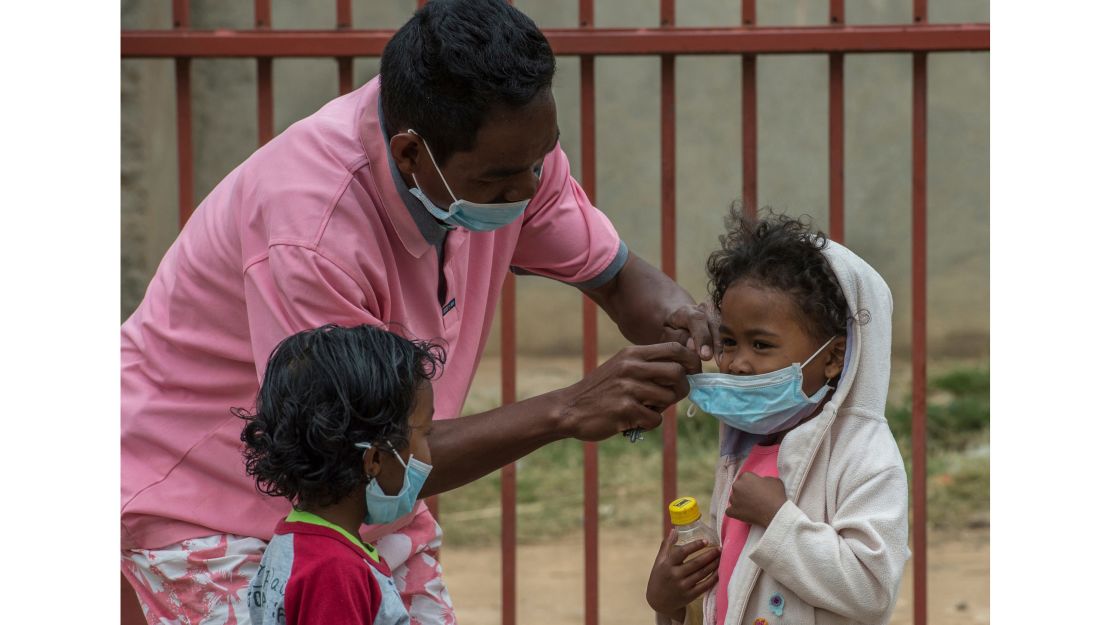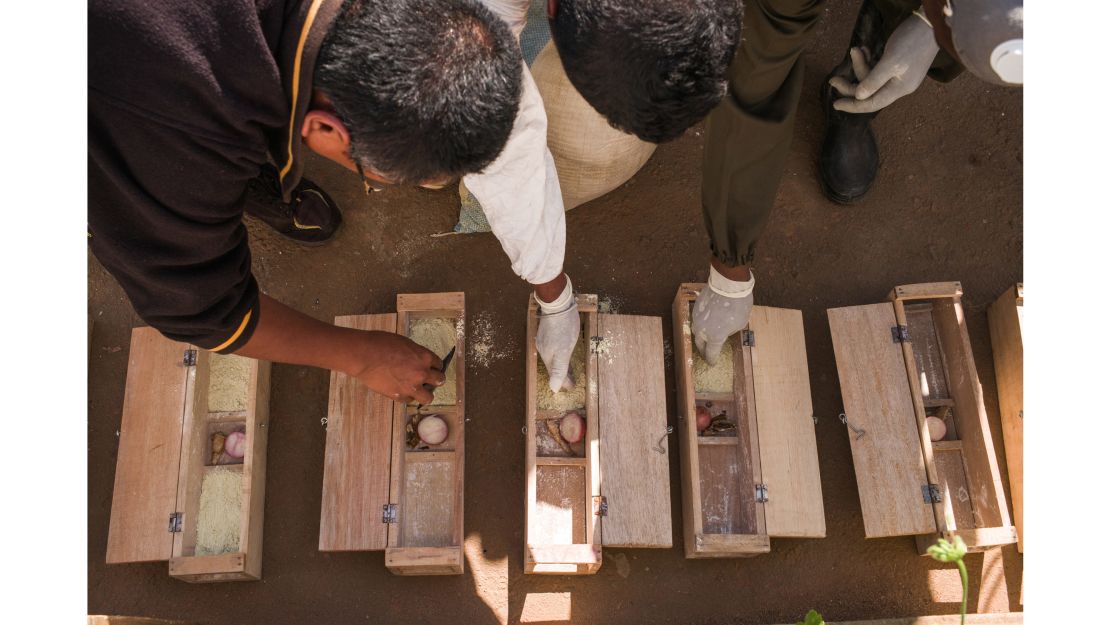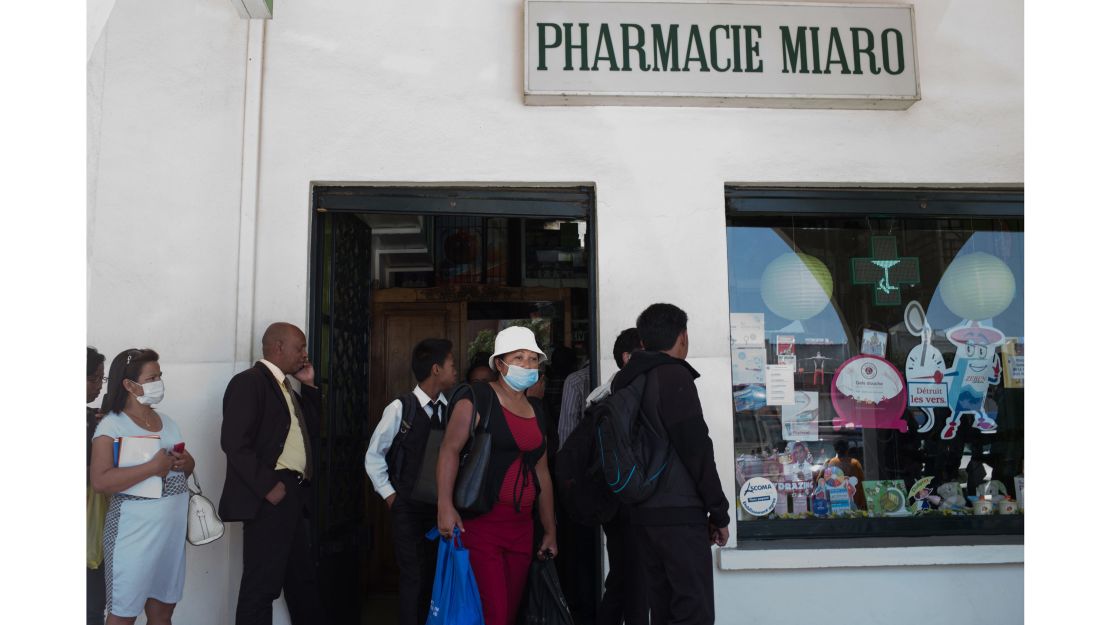Story highlights
More than 30 people are dead and more than 200 infected with plague across the country
10 cities have reported cases of the pneumonic plague
An unusually widespread outbreak of the plague is menacing Madagascar.
At least 33 people have died and more than 200 have been infected with plague across the country, according to the World Health Organization.
Plague is endemic to the country, but “contrary to past outbreaks, this one is affecting larger urban areas and ports, which increases the risk of person-to-person transmission,” WHO spokesman Tarik Jasarevic said.
Among the reported cases, 70 are known to be the more common bubonic plague, including at least seven of the deaths. More than 120 – including at least 17 deaths – are suspected to be pneumonic plague, which is more severe, according to the International Federation of Red Cross and Red Crescent Societies, known as IFRC.
Ten cities were reporting pneumonic cases as of September 30, including the capital, Antananarivo, increasing chances of the disease spreading.
The outbreak as a whole has spread across 20 districts in 10 regions and “created widespread panic across the country,” said the IFRC.
Plague is caused by infection with the bacterium Yersinia pestis and is typically spread through the bite of infected fleas, frequently carried by rats, causing bubonic plague. Symptoms include painful, swollen lymph nodes, called bubos, as well as fever, chills and coughing.
Pneumonic plague is more virulent or damaging and is an advanced form characterized by a severe lung infection. The infection can be transmitted from person to person via airborne droplets. The incubation period is short, and an infected person may die within 12 to 24 hours.

“This situation is worrying. Due to of the lack of immediate care in some parts of the country, this is the first time that pneumonic plague is spreading from person to person in non-endemic areas and in densely populated cities, including the capital Antananarivo,” Dr. Fatoumata Nafo-Traoré, regional director for Africa at IFRC, said in a statement.
An unusual outbreak
An estimated 400 cases of plague are reported in Madagascar every year, mostly the bubonic variety, but the current outbreak has affected more areas and started earlier than usual.
It’s also unusual for large urban areas to be affected, as they have been this year, the WHO states.
Outbreaks typically occur during the rainy season as “the rains drive the rodents out,” said Daniel Bausch, director of the UK Public Health Rapid Support Team. Launched in 2016, this team consists of clinicians, scientists and academics deployed to tackle outbreaks of disease around the world within 48 hours.
Bausch is sending two of his team members to Madagascar this week to collaborate with the WHO, which is assembling a team of experts to help the Madagascar Ministry of Public Health.
“The thing that is unusual is that this is the beginning of the season,” Bausch told CNN. “Usually, after six months, you have around 200 cases. Now, we have (more than) 130 in just the first month of the season.”
It’s also unusual that more than half of the cases reported are of pneumonic plague, he said.
The outbreak began after the death of a man in the central highlands of the country – a plague-endemic area – after which the Ministry of Public Health began investigating and tracing his contacts, according to the WHO.
In late September, a man from the Seychelles, in Madagascar to take part in the Indian Ocean Club Championship basketball tournament, died in a hospital from pneumonic plague. Health officials are urgently tracing individuals who had contact with the man and have started an investigation into the case.

Treatment and prevention
The government has mobilized resources to spray schools and other public places to fight fleas and rodents and curb the spread of infection.
People have also been lining up at pharmacies in the capital – some wearing face masks – to get medications or protection from infection.

If treated quickly, plague can be cured with common antibiotics, but authorities have warned people not to self-medicate. Rapid diagnosis is the essential element in curing plague, particularly the pneumonic strain.
WHO has delivered 1,190,000 doses of antibiotics to the Ministry of Health and partners this week, and 244,000 more doses are expected in the days ahead. The organization has also released $1.5 million in emergency funds to fight the outbreak.
Join the conversation
The Malagasy Red Cross has 700 volunteers out “conducting surveillance, community mobilization and contact tracing,” said Andoniaina Ratsimamanga, Secretary General of Malagasy Red Cross. “We are also supporting waste management and fumigation,” she said.
To reduce further spread of the disease, public schools are closed and the government has forbidden public gatherings, according to the IFRC, which is also releasing funds from its Disaster Relief Emergency Fund to support response efforts on the ground.
“People associate plague as one of those fearful diseases, but it’s a concern if not treated,” Bausch said. It’s now important to ensure means “to control the rodents and identify and treat people early.”
CNN’s Meera Senthilingam contributed to this report.


